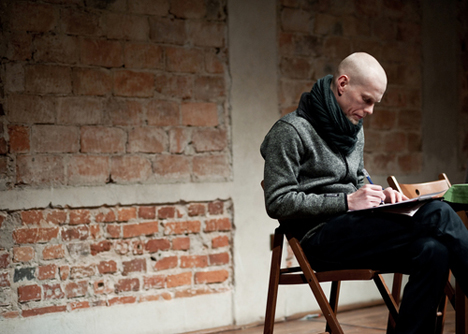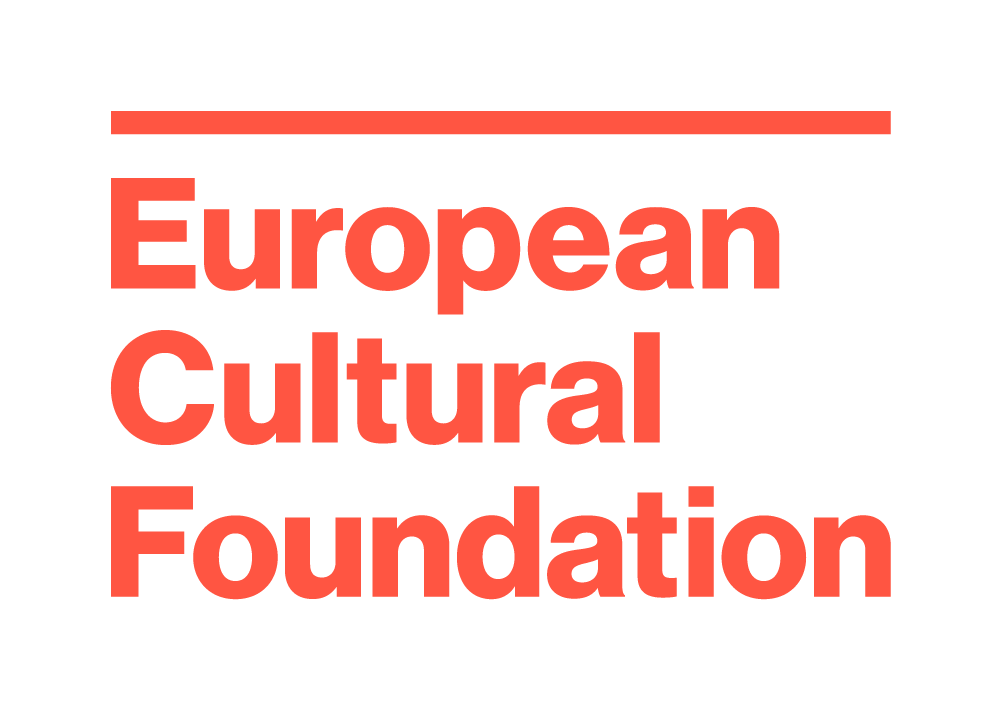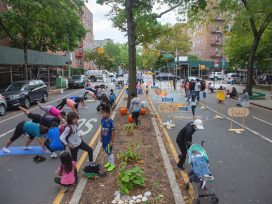Polish culture is turning barren
After 100 days in power, Poland’s nationalist right-wing government expressed its desire to completely transform Polish culture. As the anticipated assault on the country’s national culture gets underway, journalist and activist Igor Stokfiszewski of Krytyka Polityczna considers the threat that this blinkered approach poses to the vibrancy and diversity of grassroots cultural initiatives.
What are the roots that clutch, what branches grow
Out of this stony rubbish? […]
You cannot say, or guess, for you know only
A heap of broken images, where the sun beats,
And the dead tree gives no shelter, the cricket no relief,
And the dry stone no sound of water.T.S. Eliot, The Waste Land
In February 2016, just 100 days after the “Law and Justice” party returned to power, Poland’s new nationalist right-wing government issued a statement of intent to completely transform the country’s culture. In so doing, Deputy Prime Minister Piotr Gliński, who is also Minister of Culture and National Heritage, took on a huge responsibility – much greater than any arising from his official post. However, the turn towards culture as a vehicle of social transformation is certainly not new. “[C]ulture as a shared frame of reference and as something that lends meaning to people’s lives”, writes sociologist and expert on cultural policy Pascal Gielen, is “the very foundation […] of any society”.1 Gielen calls for deeper reflection concerning culture in discussions taking place at a European level on economic stimulation, social orientation and protectionism. His is one of several voices currently striking a similar note. “There is no way out of the current systemic crisis without turning in the direction of culture”, notes Polish economist Jerzy Hausner in a commentary on the prospect of global economic meltdown,2 while the Polish journalist and researcher Edwin Bendyk remarks: “talking about culture and development in tandem makes a lot of sense, the connection between the two even has something of a ‘natural’ character. There’s a very simple reason for that, as the American anthropologist Terrence Deacon points out – man does not experience reality directly, but through concepts and symbols.”3

Igor Stokfiszewski. Photo: Karol Jarek.
The turn towards culture as a vehicle of social transformation is also noticeable in the renaissance of the category “cultural hegemony”, derived from the philosophy of Antonio Gramsci. As such, culture is not considered a “superstructure” above economic conditions, but the “base” of all social activities, which may translate positively or negatively into economic issues. All of these intuitions are moving in one direction: in order to improve the quality of our collective life, it is necessary to turn towards culture and extract from it practices and values which could give a new character to believing in the prospect of a good future. If culture is allowed to develop, then emerging social potentialities will follow suit.
However, judging by the current track record of the Polish Ministry of Culture and National Heritage under Piotr Gliński, the opportunity standing before Polish society, reinforced by a new perspective on culture, will be squandered. If Gliński, together with the associates and experts who support his efforts, fails to reflect deeply on the direction his policies are taking, then the burden of extra responsibility he has taken on will increase; for he would then soon bear responsibility for depriving Polish culture of its creative powers, of its transformational and developmental forces, and for wasting the energy that would otherwise have enabled culture to translate into social recovery and the enhancement of common welfare.
Barriers to the development of culture in Poland
In 2009, the Congress of Polish Culture was organized in Krakow with a view to taking stock of culture’s status after two decades of transition from a communist to a democratic state. The conclusion drawn was simple: a series of inquiries would be necessary in order to really understand what Polish culture is at the beginning of the twenty-first century. The ensuing seven years were therefore replete with sociological, anthropological and economic research examining the cultural practices of Poles and their relationship to institutionalized cultural circles. They were also filled with the activities of social movements and organizations geared towards a new vision of culture. What has come out of this research?
A key issue is the reorientation of culture, away from the professional dimension of various artistic disciplines towards social culture, and the development of a variety of non-professional cultural practices among the broader public. The cultural needs of Poles are met, above all, outside the official circulation of culture within institutions. Over 60 per cent of Poles do not attend public cultural institutions. The most frequently visited cultural institutions are public libraries (only 38.4 per cent), followed by culture centres (30.1 per cent), followed by museums (29.1 per cent), theatres (25.8 per cent) and art galleries (19.4 per cent); Poles are least likely to attend concert halls (14.6 per cent) and opera houses (13.4 per cent).4
The lack of participation in institutional culture is compensated for by individual cultural practices and neighbourhood activities as well as participation in cultural projects that support different social groups’ and classes’ own repertoires of cultural behaviour, and encourage self-expression and self-development through personal and collective creativity. Poles have at their disposal a wide network of autonomous social centres, neighbourhood libraries, so-called “local chambers of memory” and social museums. The key players at the heart of this process are civil society organizations and social movements. Bearing in mind Poland’s class divisions, independent institutions of popular culture comprise a further key sector, which includes for example women’s country clubs and volunteer fire brigades. The creation of culture and participation in culture within the digital environment is also now of the utmost importance.
Once these forms of social culture became established, it seemed that the institutional cultural sector was faced with the task of absorbing the power of grassroots creativity. Institutions have certainly paid more attention in recent years to related cultural programmes, education and rehabilitation activities. Yet investment in culture has yet to be channelled into new infrastructure to support these new cultural forms. Since Poland’s accession to the European Union in 2004, the majority of financial resources have been dedicated to the establishment of new cultural institutions and to building modern premises for these and existing cultural institutions. The low level of participation among Poles in these official cultural institutions has proven such patterns of investment to be a road to nowhere.
However, the grassroots cultural domain has inspired cultural sector workers to mobilize with a view to participating in the management and programmes of institutions, and overcoming institutional barriers generally – especially where the rigid legal structure of the cultural order in Poland is concerned. Polish culture can flourish only when these barriers are brought down.
There have also been efforts to revitalize the labour movement among artists and cultural sector workers. Organizations like the Civic Forum of Contemporary Art, and the Commission of Art Workers within the Workers’ Initiative trade union, have widely promoted respect for workers’ rights in the field of culture and, more broadly, the need to remedy the precariousness of artists’ living and working conditions. Cultural sector workers are among the worst paid workers in Poland; the resulting lack of social security is laying waste to the creative powers of individuals and artistic communities. As the number of uninsured citizens lacking pensions rises, so does the likelihood of a future social and cultural catastrophe, in which the artistic professions disappear altogether.
The following key barriers therefore stand in the way of culture: non-participation (the alienation cultivated by official institutional culture in failing to meet the cultural needs of Poles and failing to promote practices that Poles understand to be culturally valuable – and also by focussing on the consumption of culture rather than its co-creation); class autonomy (cultural institutions by their very nature contribute to economic and class divides in Poland); out-dated institutional forms (lack of institutional innovation); limited access to culture due to restrictive copyright laws (especially in the digital environment); poor working conditions in the cultural sector (characterized by the lowest wages and the greatest lack of respect for labour rights); precarization of creative activities (lack of health insurance, of social and pension contributions, the dominance of “junk” contracts, in addition to low wages for artists or simply not paying artists at all for certain activities, including the exhibition of their works of art in public institutions); and, finally, the undervaluing of social culture (non-institutional cultural practices implemented from the bottom up in various environments – whether online or among family or neighbours – in informal groups, social movements and non-governmental organizations).
Overcoming the barriers
A programme that allows Polish culture to embark on a route towards strengthening its social, creative, transformative and developmental potential would consist of five basic points:
1) Strengthening and developing non-institutional cultures through: a) subsidies supplied in a non-centralized manner by the Ministry of Culture to as many projects as possible (guaranteeing diversity in terms of geography, themes and social groups); b) developing new instruments for financing cultural initiatives that would support small-scale activities and long-term employment prospects, allowing for fluidity in the development of creative potentialities among individuals and communities; c) developing and implementing a training programme (mainly in areas outside urban centres) to assist cultural actors with applying for public funding.
2) Reforming copyright law and the public domain, so that the use of cultural heritage, including with a view to generating new socio-cultural meanings, is not penalized.
3) Directing investment in culture primarily toward the social capital of people in the cultural sector (employees, artists, performers) and the development of programmes in existing cultural institutions. We should avoid establishing new institutions until the level of participation in existing ones rises.
4) Allowing co-management, participatory governance and workers’ democracy in public cultural institutions, creating hybrid institutions (with a particular emphasis on social-public partnerships) and enabling the sustainable operation of “social institutions” – non-public cultural institutions run by civil society organizations, non-formal groups and social movements. Therefore, we need a new law regulating the issues of organizing and conducting cultural activities.
5) Developing and implementing a system of health insurance, social security and pension contributions for artists.
What has the Polish Ministry of Culture and National Heritage achieved so far?
Public opinion remains ambivalent about direct interventions in artistic practices under Deputy Prime Minister Gliński’s watch. These include: a failed attempt to censor a performance of Death and the Maiden based on a work by Elfriede Jelinek and directed by Ewelina Marciniak in Polski Theatre, Wroclaw, in the wake of suspicions that it would be saturated with pornography; a failed attempt to appoint Tomasz Jasinski to the post of director of the Royal Castle Museum in Warsaw, despite the Trusteeship Council recommending former Minister of Culture and National Heritage Malgorzata Omilanowska for the post; and an “artistic audit” of the National Stary Theatre in Krakow run by Jan Klata, aimed at verifying which kinds of values were promoted by the theatre’s productions.
In addition, the Minister organized a meeting with – as he had described them – artists who had “fallen out of favour”, a term expressing his desire for symbolic investments in individuals who – in his opinion – are not respected enough in the professional hierarchy due to their conservative world views. The meeting appeared to be called in opposition to what the Ministry recognizes as dominant left-wing and liberal cultural elites. All of these interventions relate to the cultural activities of public institutions, to making personnel changes, and to raising the question of personal and ideological preferences in a domain of official culture. Yet if the Ministry of Culture and National Heritage is to address the barriers to culture, then this is not the way to go about its business.
The consistency of public policies proposed by Piotr Gliński can be seen in the activities of the Ministry that have had less public exposure. According to the Ministry’s official documents released in February 2016, Deputy Prime Minster Gliński had already established 13 new public cultural institutions – nine museums (including the Polish History Museum; the museums of John Paul II and Primate Stefan Wyszyński; and the Museum of Poles Saving Jews). Further, the Centre for Research on Totalitarianism focuses on the suppression of the Polish nation under the Nazi regime and the communist state, while the Memory and Future Centre in Wroclaw is intended to disseminate the historical and cultural achievements of the western and northern territories incorporated into Poland after World War II at the expense of Germany. The Ministry of Culture has announced that we can expect the list of public cultural institutions to continue to grow; meanwhile, the reform of public theatres is imminent.
According to publicly available knowledge, the direction taken by Piotr Gliński means a deepening of the process of alienation from institutional culture, as it departs ever further from the real cultural experience of Poles. Given that none of Gliński’s actions shows any promise of reflecting on the organizational and managerial modes of these institutions, they will only accelerate the general institutional lapse into apathy, and reduce the possibility of such institutions having a positive social influence. It should be added that support for these new historical museums was provided at the expense of galleries and museums of contemporary art. The latter have had their applications for funding to expand their collections refused.
A question of labour conditions
With a view to remedying the terrible living conditions of cultural workers and artists, Gliński has announced that there will be an end to the freeze on wages in cultural institutions, art schools and state archives, and a salary increase of five per cent, as well as tax relief for freelance artists. Any attempt to improve the poor living conditions of culture workers deserves praise. However, I have three observations: 1) The average wage in the cultural sector is approximately 3000 Polish złoty, that is, 1000 Polish złoty lower than the average wage in Poland.5 An increase of 150 Polish złoty means cultural workers are still some of the worst paid workers in the country, which hardly improves their situation considerably. 2) Interventions in wage and tax issues are beyond the competencies of the Ministry of Culture and National Heritage, unless it concerns institutions run directly by the Ministry (like the country’s two national theatres, for instance). Anyone who is involved in disputes of a social nature in the field of culture knows that as long as the Ministry of Finance does not come out in support of statements like Gliński’s, they remain expressions of good intentions but far from constituting proper political decisions. 3) It is absolutely necessary to implement a health insurance system, as well as a system of social security and pension contributions, for artists. Tax relief for artists and cultural workers will give the multitude of artists and curators in Poland temporary comfort, but will not change anything about their overall social situation, which gets worse and worse each day.
Why block the creative potential of social culture?
Leaving aside the issue of interventions in the area of social matters, which – I repeat – have not been implemented yet and go beyond the competencies of one ministry, the picture that emerges of the Ministry of Culture and National Heritage portrays misguided public policies aimed at expanding the institutional cultural sphere and a lack of knowledge of the cultural practices of Poles or any reflection as to the consequences of sustaining out-dated models of organizing and conducting cultural activities. Worse still, the Ministry’s current course of action also indicates a clear desire to block the creative potential of social culture. Support for the non-institutional cultural milieu announced by the Ministry is clearly wide of the mark, with funding for the programme “Patriotism of tomorrow” and celebrations for the 1050th anniversary of the baptism of Poland, which were organized jointly with the Catholic Church. Meanwhile, the results of NGO’s applications for Ministry programmes show an obvious trend – a reduction in the number of initiatives supported by the state. This approach is leading directly to the destruction of Poles’ creativity in the field of culture and, indirectly, to the loss of their ability to form communities.
Culture in Poland comprises first and foremost everyday social practices because, as the Hungarian writer and essayist György Konrád notes, culture “is derived from relationships between people”.6 Often, cultural practices develop towards organized forms of grassroots cultural activities. In Poland, there are more than 10,000 civil society organizations that are active in the cultural field. From Czaplinek in North-Western Poland to Dynów in the South, cultural brokers, artists and local activists work with communities to create events that influence their surroundings, using the tools of art. It is here that new artistic and cultural methodologies are being implemented. It is here where cultural activities intended as the foundation of social life go far beyond the production of aesthetics. It is here where social potential is triggered using cultural tools in the name of individual and collective development. Limiting actions that involve tens of thousands of active people by denying the support of central institutions is not only the easiest way to render culture barren (and impede its institutional circulation), but will lead to the squandering of a great opportunity for social culture to drive Poles’ transformative and developmental potential towards a better quality of collective life. Here lies the biggest responsibility of Piotr Gliński and the Polish Ministry of Culture and National Heritage.
Appeal to the Polish Ministry of Culture
One cannot decree that hundreds of thousands of people refrain from creative activities. Even if Polish institutional culture decays completely and cities throughout Poland end up full of empty buildings once occupied by historical museums, grassroots cultural activities in all their vibrancy and diversity will continue to develop. Neither will cultural workers’ struggles for better labour and living conditions disappear; cultural activists too will continue to insist on institutional innovation and the democratization of culture. Informal groups and non-governmental organizations will persist in their determination to establish social cultural institutions – places for encounters among people; and social movements will continue to struggle for accessible, open and diverse culture. We should all appeal to Deputy Prime Minister Gliński, along with his political associates and cultural experts: before you continue with the implementation of misguided public policies, read carefully the research conducted during the last seven years, take a good look at how Poles really cultivate a culture they actually want, look into the activities of social and labour movements in recent years, and above all – adopt a concept of culture that includes culture’s social dimensions too. Without making this effort, you will soon turn Polish culture and society into a wasteland.
Pascal Gielen, "Introduction: There's a solution to the crisis", in: Pascal Gielen (ed.), No Culture, No Europe: On the Foundation of Politics, Valiz, 2015, 10
Jerzy Hausner, "Culture as a way out of crisis", translated from Polish by Anna Zaranko, in: Another Europe: 15 Years of Capacity Building with Cultural Initiatives in the EU Neighbourhood, edited by Phillipp Dietachmair and Milica Ilic (European Cultural Foundation, 2015), 387.
Edwin Bendyk, "Mapa i terytorium", in the catalogue of the 2013 conference "Kultura i rozwój" ["Culture and development"], issuu.com/krytykapolityczna/docs/kultura_rozwoj_katalog, 11.
Rafał Drozdowski, Barbara Fatyga, Miroslaw Filiciak, Marek Krajewski, Tomasz Szlendak, "Praktyki kulturalne polaków", Wydawnictwo Naukowe Uniwersytetu Mikolaja Kopernika, 2014, 149; see: bit.ly/24KN4Sz.
Sylwia Radzięta, Sedlak & Sedlak, "Wynagrodzenia 2014: najwyzsze w IT, najnizsze w kulturze", Forbes.pl, 18 May 2015, http://bit.ly/24KPiRT.
György Konrád, "A land of studious peoples", in: Pascal Gielen (ed.), No Culture, No Europe: On the Foundation of Politics, Valiz, 2015, 116.
Published 13 May 2016
Original in English
First published by Eurozine
Contributed by European Cultural Foundation © Igor Stokfiszewski / Krytyka Polityczna, European Cultural Foundation / Eurozine
PDF/PRINTIn collaboration with
In focal points
- The city belongs to all of us
- No collaborative economy without commons
- Polish culture is turning barren
- Creating the commons in Spain: The current state of play
- Creating the commons in Moldova: The current state of play
- The power to refuse
- Culture WITH people, not just FOR people!
- When commoning strategies travel
- A rough guide to the commons
- New models of governance of culture
Newsletter
Subscribe to know what’s worth thinking about.
Related Articles

On making commons concrete
The Dutch Review of Books 2/2021
‘The Dutch Review of Books’ presents: the commons, vying for legitimacy between state and capitalism; the void of societal responsibility for #MeToo; and African oral traditions evident in rap music.

Democratic ‘Third Places’
dérive 10–12/2020
Urbanist magazine ‘dérive’ on emancipating Brazilian museology; the potential for Polish cultural centres; Swiss commons as a transferable prototype; and post-explosion Beirut.






